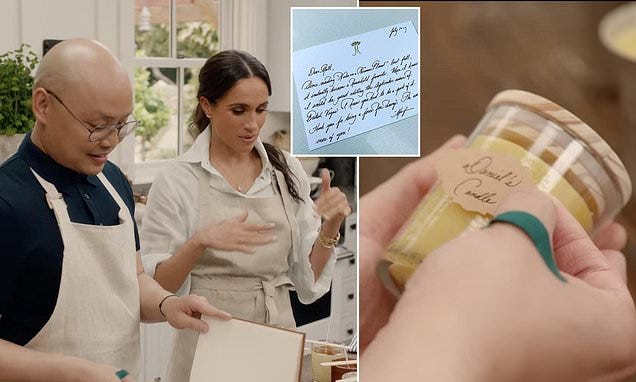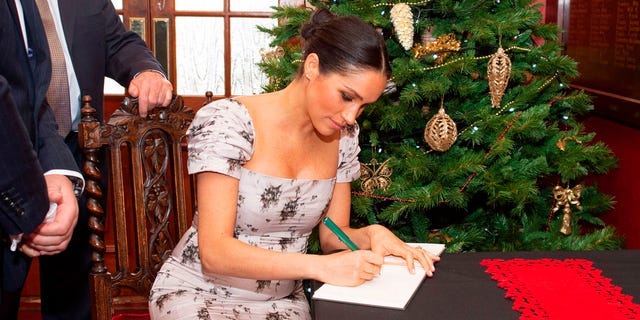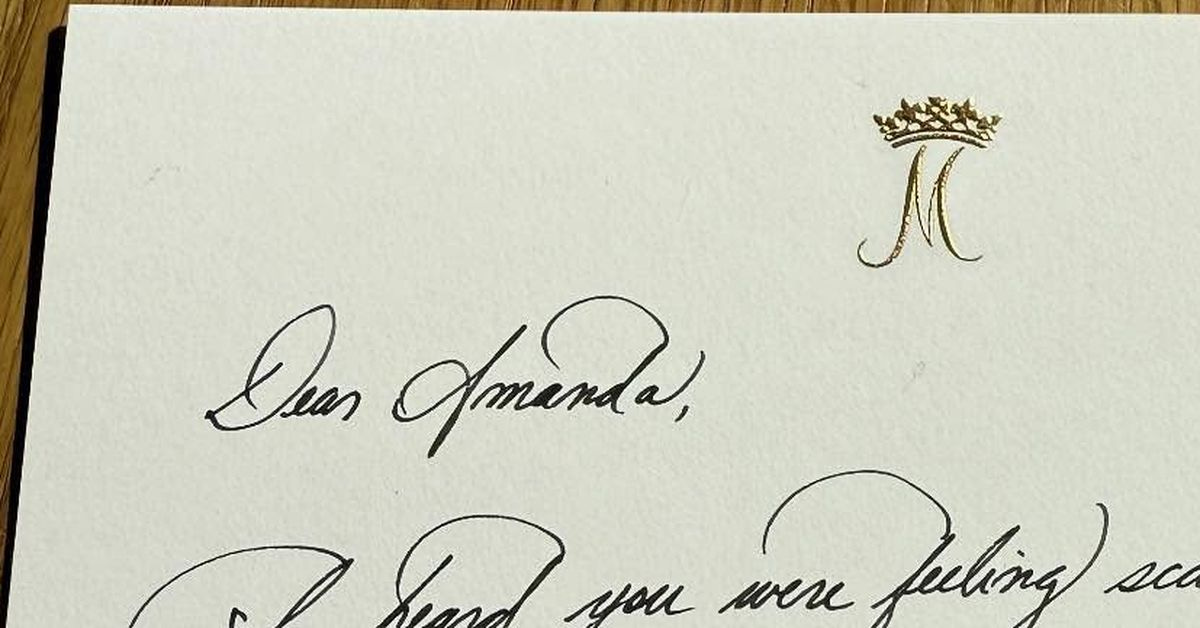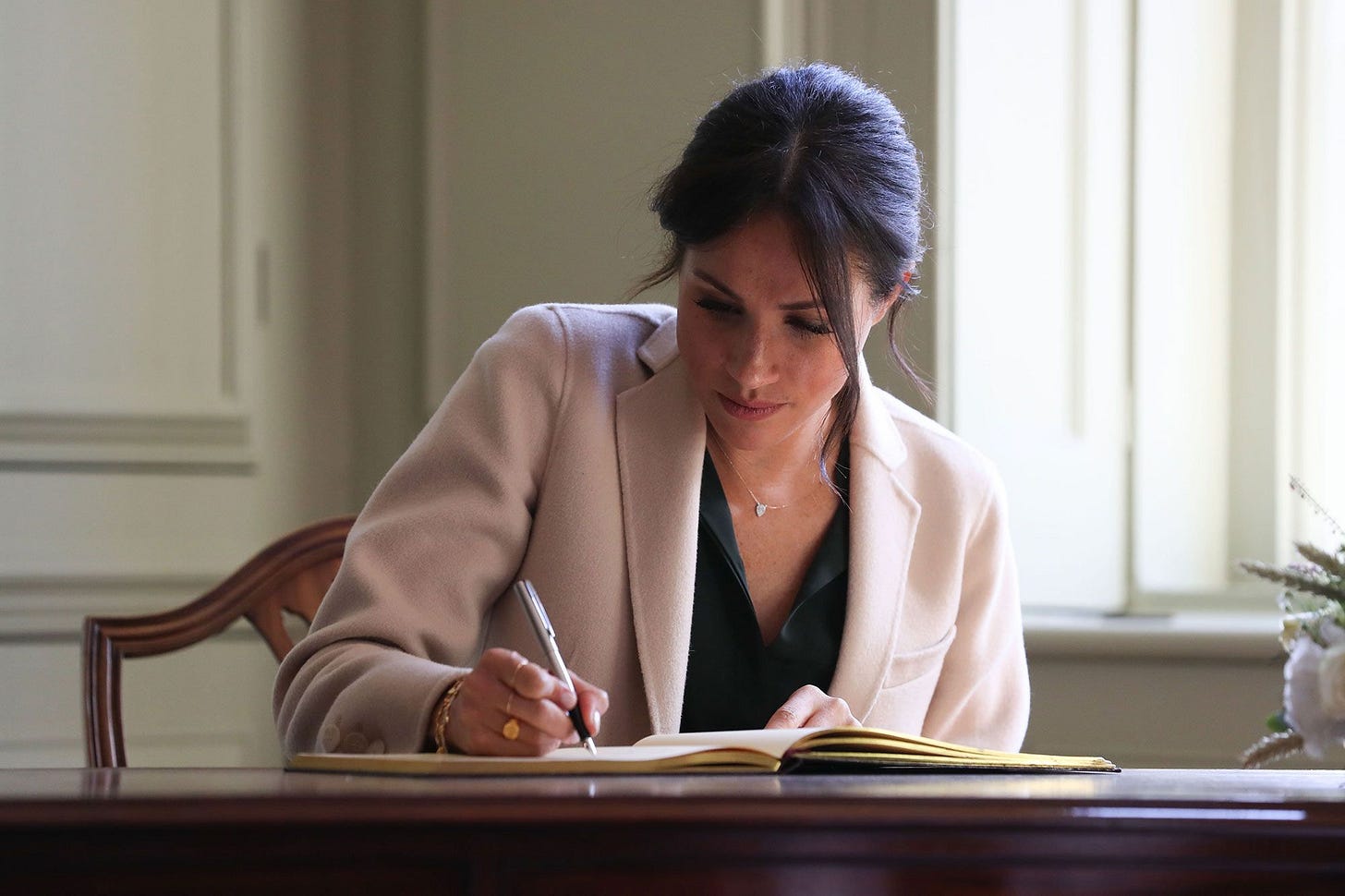How to Get Meghan Sussex-Level Handwriting
I spoke to calligraphy experts about Meghan's style...and how you can emulate it at home.
Ever since she showed off her penmanship in her Netflix series (With Love, Meghan) the Duchess of Sussex’s handwriting has been under the microscope. (You can even download it as a font!)
But like her lifestyle pursuits turned media project, Meghan’s not new to the practice of calligraphy…she’s true to it.
Meghan attended an all-girls Catholic school where handwriting was a significant part of the curriculum (she shared that she got an ‘A’ in penmanship), and this early exposure clearly ignited her passion for beautiful writing.
Before her rise to fame on Suits, Meghan actually worked as a freelance calligrapher (taking on high-profile projects such as addressing wedding invitations for Robin Thicke and Paula Patton in 2005). She also taught calligraphy, gift-wrapping, and bookbinding at the Paper Source store in Beverly Hills from 2004 to 2005, a job she held while auditioning for acting roles.
With the dawn of Instagram and Meghan’s lifestyle blog, The Tig, examples of her handwriting skills began to hit the internet. Meghan even wrote about her love of handwritten notes on The Tig, saying: “I think handwritten notes are a lost art form. When I booked my first pilot, my dad wrote me a letter that I still have. The idea of someone taking the time to put pen to paper is really special.”
Now, of course, the logo for Meghan’s new lifestyle brand, As Ever, features her own handwriting, menus and labels on With Love Meghan proudly showcase Meghan’s flowing script, and posts to social media (mood boards! thank you notes!) highlight how the Duchess uses her skills in her personal life.
With so much recent media presence, Meghan’s elegant and flowing script has captivated fans and critics alike, prompting many to wonder: how can I achieve that level of grace in my own handwriting?
Today, I’ve teamed up with two calligraphy experts—Grace Song and Lauren Fitzmaurice—to break down the art behind Meghan’s beautiful penmanship.
From her fluid strokes to the delicate balance between precision and expressiveness, Grace Song has honed the art of creating writing that flows beautifully and naturally. If you’re looking to refine your script, Grace’s books, Brush Pen Lettering and the Brush Pen Lettering Practice Book offer practical exercises and step-by-step guides to mastering the art of beautiful writing.
And Lauren Fitzmaurice, author of Hand Lettering for Self-Care, explores how the practice of calligraphy can go beyond just aesthetics—it can be a form of self-care and mindfulness. In her book, Lauren offers writing exercises and shows how slowing down to focus on your handwriting can provide a moment of calm in a chaotic world.
So, whether you're a seasoned handwriter or just starting out, I learned that there are a slew of actionable tips and tricks you can take to elevate your script. We’re diving into all of them below.
Some responses have been slightly edited for length and clarity.
From a calligraphy perspective, what are the key elements that make the Duchess of Sussex’s penmanship stand out?
Grace Song: Meghan Markle’s handwriting is distinctive for a couple of reasons. First, it’s clear that she has taken the time to carefully refine and personalize her style. It’s a type of handwriting she confidently uses across various contexts—from formal letters and greeting cards to everyday notes and lists. Her writing is consistently elegant whether it’s on a gift tag or labeling items inher pantry.
Secondly, the flourishes (curved lines) she adds to her capital letters and sometimes to lowercase letters, are quite unique. This signature touch appears consistently in her handwriting, which makes it an easily recognizable style.
Lauren Fitzmaurice: The Duchess of Sussex’s handwriting is very elegant and looks so effortless. From a calligraphy perspective, key elements that make her penmanship stand out are the consistency of the letter size, style, slant, and spacing as well as the subtle flair that she adds with the simple flourishes.
It is clear that she has training in handwriting and has spent lots of time practicing this particular style of calligraphy. While it is beautiful and elegant, it’s also simple to read—and that also adds charm and simplicity.
In your experience, how much of handwriting is about technique versus natural talent? Can anyone develop Meghan Markle-level penmanship with practice?
GS: I’ve always believed that anyone can learn to write beautifully with enough time and dedicated practice. Beautiful handwriting is a skill, and like any skill, it can be developed.
LM: While there may be some people who truly have a talent or knack for handwriting, handwriting (and specifically calligraphy) is mostly about technique.
GS: Many people mistakenly think that if their handwriting is generally messy or illegible, it’s nearly impossible to improve. But with consistent, intentional practice, anyone can cultivate a writing style that is not only clear and legible, but also stylish and elegant.
LM: Pretty styles and successful handwriting skills, such as Meghan’s, come with lots of consistent practice and patience. I always tell people that anyone can learn, it just takes lots of practice.
For someone looking to improve their own handwriting, what are the first steps they should take to achieve a more polished and graceful style?
GS: It’s important to first understand how letters are constructed and to become familiar with the basic strokes that form most letters. Study high-quality exemplars of the style you want to emulate, and use them as a reference.
LM: I always start learning new lettering styles and techniques with a pencil first so that I can get comfortable with the style before moving to ink or a more complex tool, such as a brush pen, which is my tool of choice.
GS: When practicing, break the process into manageable steps. For example, start with lowercase letters that share a common shape, like oval-based letters (a, o, e), then move on to those with descending loops (g, j, y), and so on. Consistency in letter size and slant is key to achieving a polished look.
LM: Any and every lettering style is made of consistent basic strokes that make up the letters. I always suggest practicing these basic strokes first and then moving to alphabet, word, and eventually sentence-level practice. I also suggest starting with simple styles and adding and changing them to fit what works best for you.
GS: Once you’ve built a solid foundation of consistent, well-formed letters, you can begin to personalize your handwriting by adding stylistic touches that reflect your personality, much like how Meghan adds distinctive flourishes to her capital letters.
LM: Learning new styles of lettering is all about muscle memory, so the more you practice specific strokes and keep it all consistent in spacing and style, the more cohesive your lettering style will be. Practice in short, focused sessions as often as you can, paying attention to each stroke and the basics.
GS: You don’t need to practice for hours at a time; even 15 to 30 minutes of focused, regular practice can result in noticeable improvements. As you practice, compare your writing to the exemplar to identify areas for improvement.
Are there any common penmanship mistakes that people should avoid?
LM: The most common [mistake] is rushing. In calligraphy, especially brush calligraphy or even pointed pen calligraphy, slow is fast. You are going to be way more happy with the result of your work if you take each stroke at a time and really take your time.
GS: When letters are poorly shaped or indistinguishable from one another (e.g., between ‘m’ and ‘n’), your writing becomes difficult to read. It's also important to maintain consistent letter size. Variations in height or width can make your writing appear messy.
GS: Another common mistake is an inconsistent slant in which letters or words lean in different directions. Choose a slant (vertical, slightly right-leaning, etc.) and stick with it. You can even add slant lines to your practice sheets to develop this consistency.
LM: Other mistakes can include uneven spacing, heavy-handedness, and lack of control. All of these simple mistakes can be remedied with consistent and regular practice. Over time, shakiness and inconsistency will fade and muscle memory will help you create lettering you are proud of.
LM: You don’t need to start with fancy tools, you can do calligraphy with any marker or pencil, but I do prefer creating envelopes and notes with a quality brush pen such as the Tombow Fudenosuke Hard Tip Brush Pen.
Meghan has been known to use her handwriting as a personal form of expression. How can people infuse their own personality into their penmanship without losing the beauty of the style?
LM: I absolutely love calligraphy because though there is a specific technique, everyone is able to create a style all their own. You can start with a simple script style and change it up by just adding a little flair with a simple flourish or a fun loop on a capital letter. Play around with different styles and figure out what works best for you and your technique.
GS: Once you’ve mastered the basics of letter formation and can consistently maintain size, slant, and spacing, you can begin experimenting with these elements to develop your own style. For instance, in cursive handwriting, writing along a wavy baseline can create a fun, bouncy effect. You might also try increasing the spacing between letters to introduce more negative space.
GS: Adding flourishes, like the curved lines Meghan Markle uses to embellish her capital letters, is another great way to infuse your handwriting with personality. Whatever stylistic choices you make, be sure to apply them consistently. As you continue to practice, pay attention to the natural movements of your hand. These subtle gestures are what give your handwriting its unique charm and character.
Lauren, in your book, you explore calligraphy as a form of self-care. Can you share how practicing handwriting or calligraphy can have a calming or therapeutic effect on the mind?
LM: Words can have such a huge impact on someone’s day, whether you are writing those words to yourself or in a note to someone else. As you build muscle memory, different lettering styles become so natural feeling and have a calming effect. You are so focused on different strokes and able to check out from the worries and stress of your day.
LM: I started calligraphy during a very difficult time in my life when my son had to have open heart surgery at birth. The next few years, through doctor appointments, surgeries, and procedures, I had lettering to keep me calm. It also was so therapeutic to write inspirational quotes and positive words to myself. Yes, it’s fun to write pretty words for others, like Meghan does with her handwritten notes, but it is also fun to learn lettering just for you.
For someone who might be new to calligraphy, what are some ways they can incorporate this practice into their routine as a form of relaxation or mindfulness?
GS: With regular practice, I began to notice that it would put me in a meditative state, where my focus narrowed solely to the letters forming beneath my pen. I became far less distracted by my to-do list or random, unrelated thoughts. This sense of mental clarity made me genuinely look forward to each practice session.
LM: Calligraphy is such an amazing hobby to start because it is so convenient. You don’t have to have fancy tools to start learning. Just start. Keep a sketchbook or journal in your bag with your favorite pen, pencil, or marker, and find time to practice.
GS: I recommend practicing in a dedicated space with all the tools you need at your fingertips. This makes it easier to get started and sometimes it’s just that: getting started. When practicing words and phrases, try writing out your favorite song lyrics, poems, or short stories that hold personal meaning. Another great way to use calligraphy as a mindfulness practice is to incorporate it into your journaling, whether you're reflecting on your thoughts or documenting daily events.
LM: Even if you can only find 10 minutes of practice each day, dedicating a little time to focus on this new skill will add up over time. Keep it simple while also embracing imperfection. You don’t have to be perfect. Embrace the growth and progress you make along the way. Find resources that you really enjoy using, and once you learn the basics, don’t be afraid to try a new style or even make it your own. The pen is ready for you when you are ready to pick it up.
Thank you to Grace and Lauren, as well as their team at Pacific & Court for providing me with their calligraphy books! For those looking to embrace writing as a way to center themselves, both Grace Song and Lauren Fitzmaurice offer additional resources and training on their websites.
Grace’s books: Brush Pen Lettering and the Brush Pen Lettering Practice Book
Lauren’s book: Hand Lettering for Self-Care











Things to do on a long flight! Might just do this on my 33 hour flight to Botswana next month!
This was such a fascinating read! Great info from your interviewees.